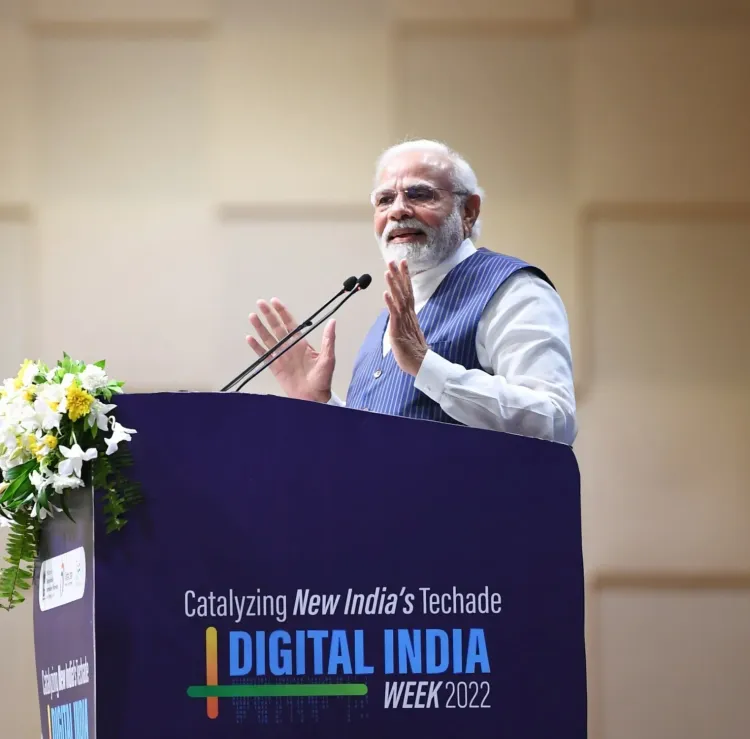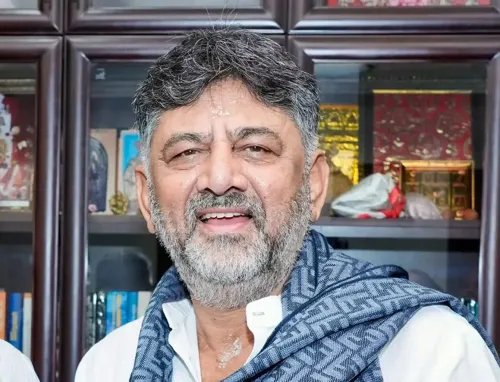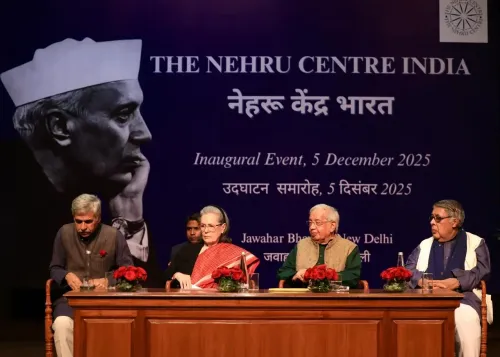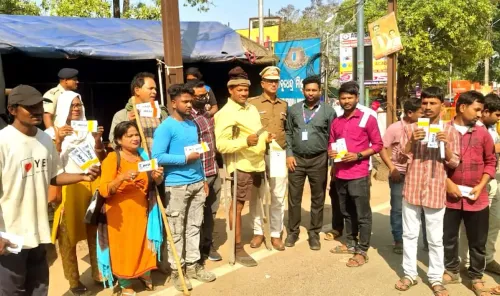How is India Transforming Digitally as It Approaches Its 79th Independence Day?

Synopsis
Key Takeaways
- Digital governance empowers citizens in India.
- UPI transactions have reached record highs.
- Direct Benefit Transfer reduces corruption.
- AI integration enhances service delivery.
- Initiatives like MyGov.in promote citizen engagement.
Mumbai, Aug 10 (NationPress) As India gears up to celebrate its 79th Independence Day next week, the nation's digital governance framework has empowered citizens to access services and engage in governance with greater independence. Tech-driven citizen-focused governance has spurred citizen empowerment and fostered inclusive development.
The Digital India initiative, initiated in 2015, has redefined India as a digitally adept society and knowledge-driven economy. Digital Public Infrastructure (DPI) platforms, such as Aadhaar, UPI, and DigiLocker, have transformed service delivery.
In the past month alone, UPI has achieved approximately 19.5 billion transactions worth over Rs 25 lakh crore. This averages out to around 650 million transactions daily, totaling about Rs 83,000 crore each day.
India pioneered the implementation of Direct Benefit Transfer (DBT) on a large scale, effectively decreasing corruption and ensuring the prompt delivery of welfare benefits. Moreover, the integration of AI in governance has tailored services to meet citizen needs through grievance resolution systems and predictive analytics in sectors like healthcare and agriculture.
Noteworthy government-led initiatives include the MyGov.in platform, the National AI Portal (INDIAai), and Chic-CAD Plus. The POSHAN Tracker, a mobile application, was designed for Anganwadi workers to deliver real-time updates on nutrition and childcare services.
The Digital Infrastructure for Knowledge Sharing (DIKSHA) serves as a national platform for school education, while the AYUSH Information Hub (AIH) provides reliable information on traditional medical practices.
The UMANG (Unified Mobile Application for New-age Governance) facilitates access to over 1,200 Central and state government services in various languages, including Aadhaar, DigiLocker, Bharat Bill Payment System, PAN, EPFO, and more.
E-governance platforms have reduced bureaucratic opacity and bolstered public trust. Currently, the country is advancing AI-driven tools and multilingual platforms to ensure that services effectively reach marginalized communities.
The IndiaAI Mission, a government initiative, has developed 'AI Kosh', a data repository containing over 400 databases to aid researchers and entrepreneurs in creating multilingual AI solutions.
Prime Minister Narendra Modi has consistently emphasized that India is prepared to share the technology, knowledge, and expertise gained through tech-enabled governance with the Global South.










